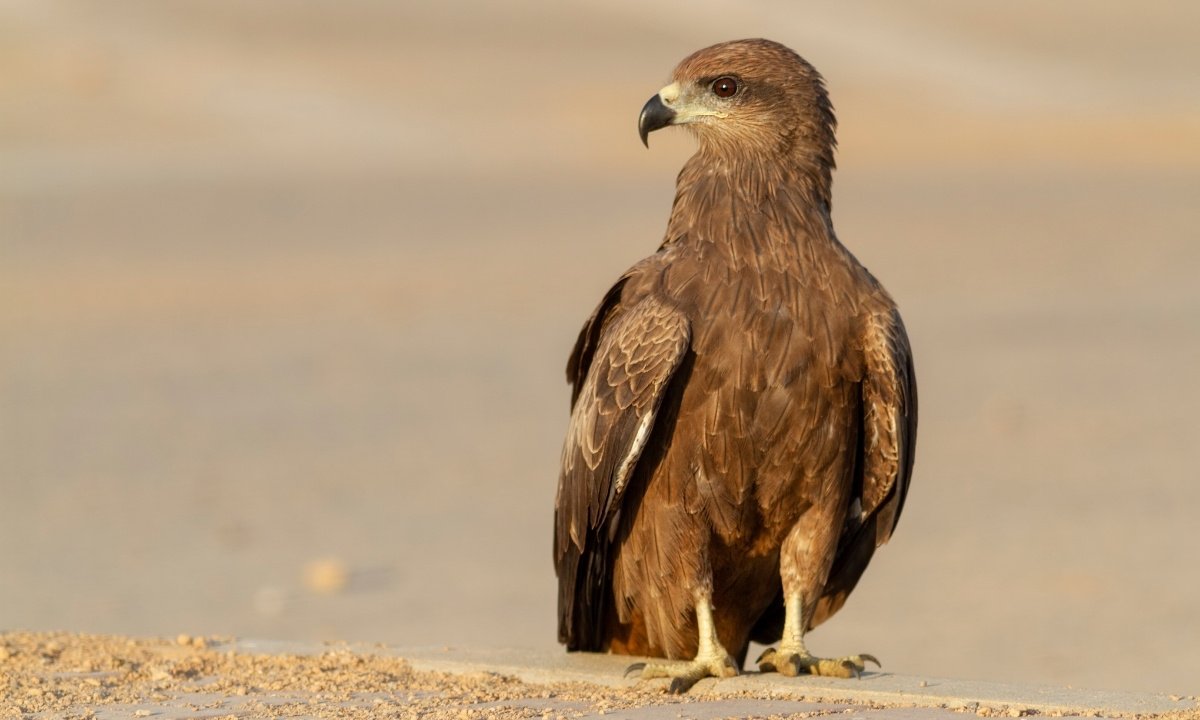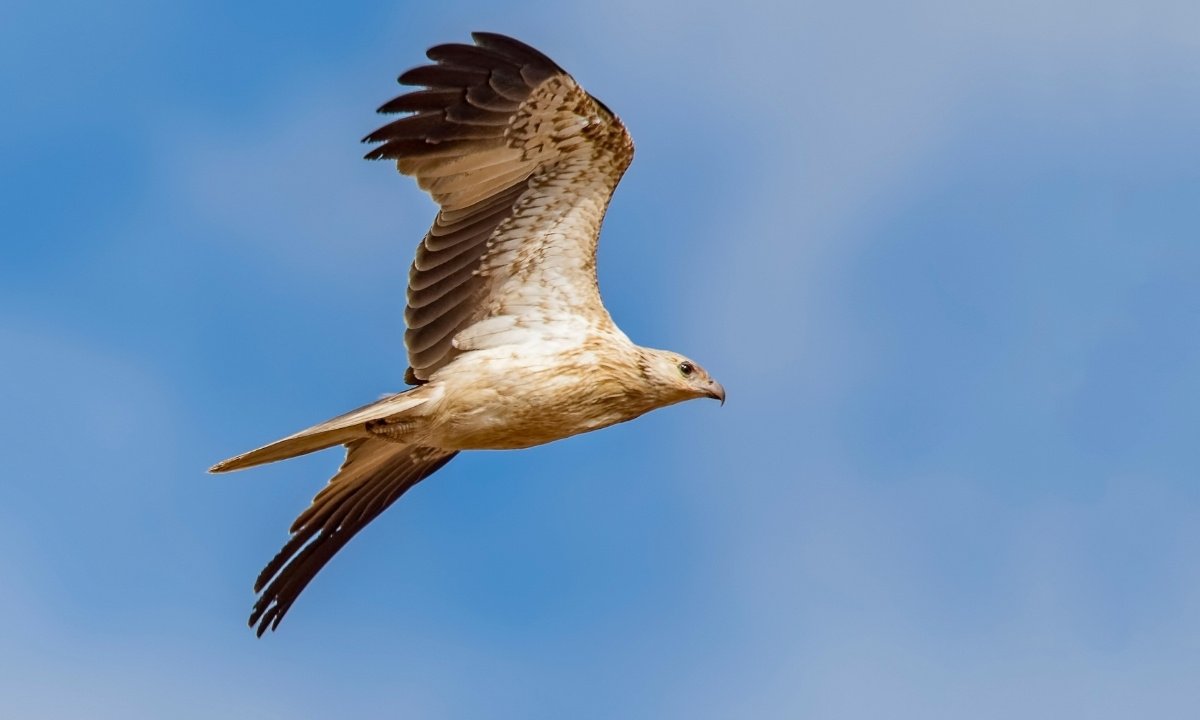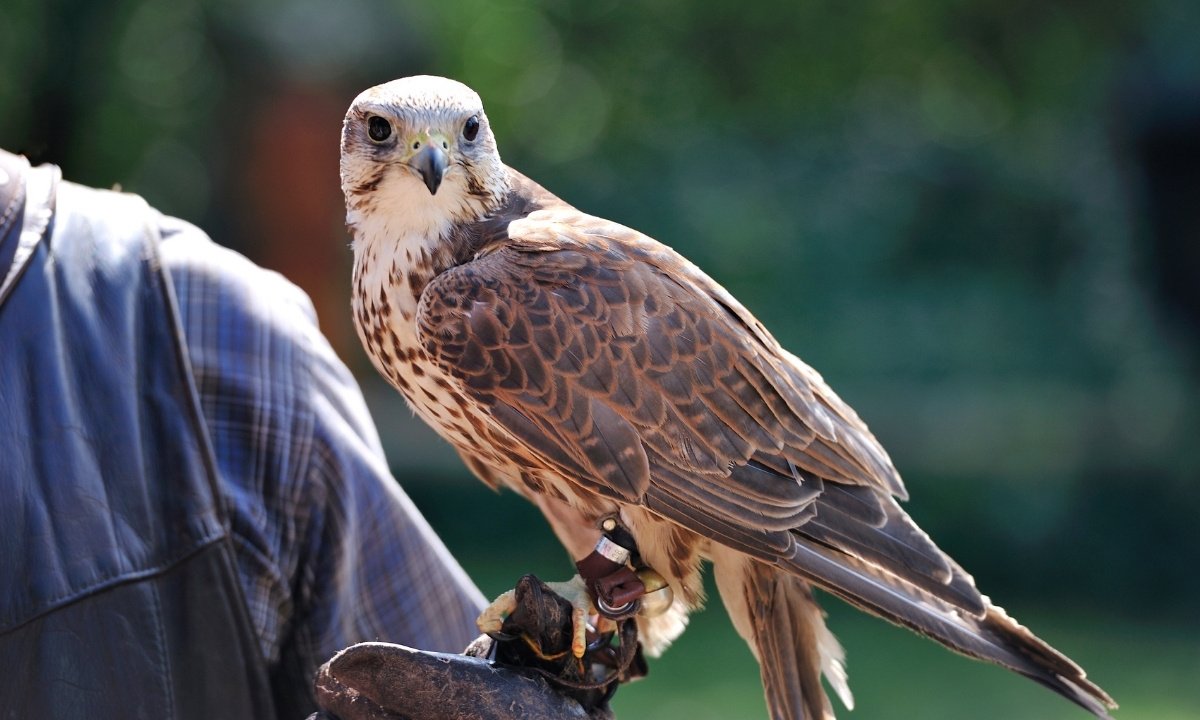Australia’s native people have long described raptors carrying fire to start new fires.
In tropical savannas of northern Australia, these “firehawks” – birds including Black Kites, Whistling Kites, and Brown Falcons – patrol near bushfires and at times pick up smoldering sticks that they drop later in green grass. Scientists have now confirmed this remarkable behaviour: the birds actively spread fire to flush out prey from the fire.
What Are “Firehawks”?
Firehawks is the term employed within the local community for certain Australian raptors (bird of prey) which allegedly utilize fire to hunt. Aboriginal witnesses report that Black Kites (Milvus migrans), Whistling Kites (Haliastur sphenurus) and Brown Falcons (Falco berigora) are observed transporting burning twigs or hot coals to unburned areas. This “spreading of fire” practice is commonly documented in Indigenous folklore and sacred ceremonies. In plain terms, firehawks are just birds who intentionally start new fires. Modern science calls it “intentional fire-spreading” by raptors.
These observations have intrigued scientists until now; the utilization of fire as an instrument was thought to be uniquely human. If birds are doing it on purpose, then that theory goes flying out the window. But observations are extremely limited – most scientists working around fires say they’ve only ever observed it once or a few times, if at all.
Fire-Spreading Behavior
Firehawk action involves birds flying to the ground and collecting burning material in their claws or beaks and dropping it where a new fire will start. Witnesses describe raptors entering an existing fire line, picking up a hot stick, and flying to dry grass a few meters away – occasionally hundreds of meters – and dropping it. The stick ignites the fuel and starts a new fire. The birds remain near the new front of the fire to acquire prey that is escaping from the fire.
It is usually carried out together: one bird sets a fire and the others take part in the hunt.
It’s noteworthy that the birds shoot at unburnt areas, and not at small new smoldering embers. It’s noted that the birds seem to shoot beyond firebreaks or rivers, trying to set fires in new areas. Sometimes the try fails (the stick goes out or lands on already burned ground), but sometimes it does actually spread the fire. In the 1960s, for example, one observer described a kite that gathered up a smoldering stick, dropped it in dry grass half a mile away, and then hung out with its friends waiting for rodents and reptiles to run off.
These events have been seen by firefighters and ranchers. One fire manager described the way in which firehawks have, on occasion, carried fires over his control lines, causing fires to jump breaks unexpectedly. Since this behavior is very unusual and difficult to document, much of what we know is based on good eyewitness accounts and Aboriginal elders rather than photographs.

Key Species and Observations
The three main “firehawk” species are:
Black Kite (Milvus migrans): Common scavenging kite found near fire. Black kites have long been suspected by researchers of stealing hot sticks to start fire.
Whistling Kite (Haliastur sphenurus): Yet another common raptor often seen flying over the location of burning materials. It is also said to carry ember to light new fire.
Brown Falcon (Falco berigora): A small falcon that resides in open areas. Brown falcons have been seen by witnesses dropping firebrands and then diving after fleeing insects.
These are the most frequent “firehawk” reports, and they are three of the most common raptors seen in northern Australia’s savannas.
(Black Kites are also found beyond Australia, but only in northern Australia is this fire-starting myth so far.) Other birds are “fire-followers” – they gather at the front of any fire to feed – but these three alone have records of actually starting new fires. For instance, Penn State researcher Mark Bonta says some anecdotal reports of caracaras (falcon) in the Americas may be doing the same thing, but definitive evidence is currently only from Australia.
Sightings are very rare. Most biologists report that a seasoned observer will see a firehawk attempt only a handful of times in decades of fieldwork. No credible photographs or videos of an actual fire-start have yet been taken, though scientists are now planning studies (with controlled burns and film crews) to capture one in the act.
Why Do Firehawks Spread Fires?
Hunting strategy is the main reason. By starting a new fire, the birds chase away grasshoppers, lizards, rodents, and other small animals that seek refuge in vegetation. These animals then venture out into the open and are easy prey for the raptors. The Aboriginal stories indulge in this: after leaving a burning stick, the birds “wait with mates for the mad exodus of scorched and frightened rodents and reptiles”. Researchers have discovered that firehawks effectively use fire as an instrument to scare away other grasshopper food, frogs, spiders and small mammals.
This is a demonstration of tool use. The fire is the tool to regulate the environment for an advantage. As Penn State geographer Mark Bonta reports, the birds “capitalize on fires” and “see smoke and grab flushed-out animals,” but some also “actively spread fires on the landscape in order to gain food.” That is: the birds need more food, so they set new fires to set up a buffet.
It’s interesting to note that not everyone believes it’s always on purpose. Some scientists say birds incidentally pick up a lit stick while they’re searching for prey, and then the stick accidentally starts a new fire. But the precise descriptions from numerous witnesses lead strongly towards a purpose. As one scientist said, observing several birds making the same movement over and over at managed burns indicates strongly that they are doing it by design, not inadvertently. It is considered that, at least in some cases, firehawks deliberately initiate fire to hunt more effectively.

Scientific Research and Debate
There was heightened interest in firehawks after a 2017 article brought together numerous accounts of the practice. Bonta and others in the Journal of Ethnobiology published that Aboriginal ecological knowledge and science observations alike confirm the phenomenon. Their work involved more than 20 eyewitness accounts from Aboriginal rangers and station managers, and firefighters, and examined historical records. Even the testimony by that one Aboriginal elder (written in 1964) is about the exact motion of a kite dropping a burning stick and then chasing the fleeing prey.
It specifically accentuates Indigenous knowledge. As researcher Bonta notes, “we’re not discovering anything” new to Aboriginal people – they’ve known about firehawks for thousands of years.
What’s new is Western science documenting it. Still, the idea that birds can control fire has met skepticism. Many biologists find it hard to believe animals could plan fire use; there have been no photos proving intentional arson by a bird. So, some experts are hesitant to include firehawks in fire models. Bonta and his researchers make sure to point out that the ethnographic richness (many independent accounts) is more persuasive evidence than would be a blurry photograph.
Upcoming plans are to watch birds in close detail on prescribed burns. Bonta’s team would like to have observers (and camera gear) on burns to capture the act in the act. For the present, the combination of old-timer testimony, firefighter anecdote, and laboratory trials on a small scale gives the balance of probabilities in favor of believing that firehawks exist. Even beyond ornithology, experts are intrigued by the suggestion that birds are smarter than we thought, and perhaps employing one of the oldest of Nature’s weapons (fire) in a new manner.
Ecological and Management Implications
Learning about firehawks is important both for wildlife and humans. Ecologically, that means that fires will naturally burn across barriers (like rivers or firebreaks) when raptors carry embers over. It can explain some “mystery fires” where blazes seem a great distance away from the original fire. In practice, Australian bushfire officials already know to watch out for raptors along burn fronts. A fire specialist called the birds “a right pain in the backside” when they carry fire over control lines. Station managers report that fires they think were out break back up, possibly due to a hidden smoldering stick left by a firehawk.
Land management, including firehawks in planning, is a new challenge.
Firehawking bird activity may have to be included in controlled burn calendars. Furthermore, since these birds subsist on burning landscapes, preventing fires too much (for livestock or safety concerns) could potentially harm firehawk populations or other fire-dependent species. Conversely, humans afraid of wildfires have at times shot large kites near fire sites; knowing kites cause fires can fuel that anxiety. The research team finds local Aboriginal rangers do consider firehawks when dealing with burns, but larger bureaucracies tend not to think about the risk of bird-ignited fires.
Firehawks are a unique international example of wildlife interacting with fire. Most sightings of “fire-foraging” birds in Africa or the Americas detail a species going to an already lit fire to forage. If other animals also do this, it could change our understanding of animals’ manipulation of fire. At the same time, the legend of the firehawk reminds us that science and traditional knowledge can go hand-in-hand: indigenous peoples have managed landscapes with fire for millennia, and here the natural world seems to have the same idea.

Recommended Resources
Bonta, M. et al. (2017). Intentional Fire-Spreading by “Firehawk” Raptors in Northern Australia. Journal of Ethnobiology 37(4):700–718. (Academic article regarding firehawk sightings.)
Hausheer, J.E. (2018). “Australian ‘Firehawk’ Raptors Intentionally Spread Wildfires”. Nature Conservancy Cool Green Science blog. (Summary article of the available 2017 study and interviews.)
Greshko, M. (2018). “Why These Birds Carry Flames In Their Beaks.” National Geographic (Animals section). (Interesting science article on firehawks with images and history.)
(Bonus video) Surprising Science series of the Natural History Museum: Why would a bird start a fire? (YouTube). (Short animated explanation with a flaming scientist on firehawks.)
Smart Summary
What are firehawks? Australian raptors (especially Black Kites, Whistling Kites, Brown Falcons) commonly “firehawks” for carrying burning sticks to help start new fires. This is Aboriginal knowledge.
What do they do with fire? The birds collect smoldering grass or sticks from the smoldering edges of fires and drop them on dry vegetation elsewhere. The resulting flames chase off insects and small vertebrates, which the birds then capture.
Evidence and rarity: Dozens of eyewitness accounts were collected during a 2017 ethnobiology study confirming the behavior. Most witnesses (scientists, rangers) report seeing it but once or twice. No confirmed photos exist yet.
Why they do it: Firehawks deliberately make fires spread to hunt. By igniting new fires, they push prey into the open. Scientists regard this complex tool use on the part of animals.
Implications for management: The phenomenon is now being incorporated into fire planning. Although unlikely, it has the potential to make a controlled burn flare up unexpectedly. Scientists point out that recognizing firehawks is significant for the comprehension of savanna fire regimes.
If you enjoyed this article and love learning about birds, please support our work by buying one of our bird-themed mugs from the shop. Your support helps us create and share more well-researched stories like this. Thank you.


